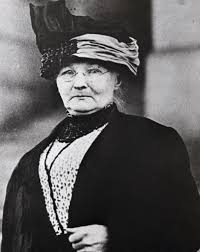As 2018 winds to a close, I'm thankful for a lesson it taught me: that unexpected good fortune can come when things seem pretty dark. I'm thinking particularly of the great and victorious WV 2018 Teachers' Strike (technically the teachers' and school support workers' work stoppage, but let's not be picky).
That historic struggle inspired other successful strikes in several states and gave hope to those who believe in the labor movement and public education. And it just resulted in another victory of sorts, a year of coverage under the Public Employees Insurance Agency without benefit cuts or premium increases. This wasn't a perfect or even a long term solution but it was a clear win.
Charleston Gazette-Mail statehouse reporter Phil Kabler, who has been doing his kind of work for about as long as I've been doing mine, summed it up beautifully:
...What was most remarkable was that this was a grassroots effort. It wasn’t, as critics unsuccessfully tried to portray it, as labor bosses directing their minions. It was teachers fed up with low pay and benefits and a general sense of being unappreciated banding together to let leaders in Charleston know they weren’t going to take it anymore.
Also remarkable was the spirit. Despite the seriousness of the issues at hand, the rallies at the Capitol were joyous affairs, with singing, chanting, dancing, and featuring colorful (and clever) signs. This was a celebration....
Wearing red, teachers in 2018 paid homage to the state’s proud labor heritage, and when the governor and legislative leadership tried to use the strategy of divide and conquer, trying to pit school boards against teachers, then parents against teachers, and then state employees against teachers, the teachers stood united.
Early on, when leadership contended that students would suffer, particularly those needy students who depend on school lunches, teachers and others did the noble thing, rising before dawn each day to pack lunches for their students before heading to Charleston, not only putting their students first, but assuming the moral high ground in the fight.
Most importantly, West Virginia teachers started a movement that spread, so far, to Arizona, Colorado, Oklahoma, and Kentucky, showing that while organized labor may be a shadow of its former self, the ability of working people to fight for their rights may not be lost.I can still see plenty of hard fights on the horizon in the coming year--including further assaults on public education in the legislature--but these will take place on a completely different landscape.
So thanks, teachers and school workers, for many things, including reminding me that we live in an open universe in which all kinds of wild and unexpected things can occur, some of which may be better than anyone could have expected.













 Santiago is the Spanish name for St James, brother of John and one of Jesus ‘ closest disciples, though—or because—he was a bit of a screwup at times.
Santiago is the Spanish name for St James, brother of John and one of Jesus ‘ closest disciples, though—or because—he was a bit of a screwup at times.
 The weird thing for me about walking the Camino—aside from the daily 15-20 miles with a pack and sharing bedrooms, showers and toilets with total strangers every night—is not reading books
The weird thing for me about walking the Camino—aside from the daily 15-20 miles with a pack and sharing bedrooms, showers and toilets with total strangers every night—is not reading books First, a shoutout to all my friends fighting the good fight in West Virginia. It’s weird to be so fat away with everything going on. Eight years or so ago I was out of the country when Upper Big Branch happened.
First, a shoutout to all my friends fighting the good fight in West Virginia. It’s weird to be so fat away with everything going on. Eight years or so ago I was out of the country when Upper Big Branch happened. Day 7 Camino: Important geographic discovery. European kilometers are way longer than American kilometers (not that we care much for kilometers there).
Day 7 Camino: Important geographic discovery. European kilometers are way longer than American kilometers (not that we care much for kilometers there).
 Ever since I got bit by the Camino bug I imagined and dreaded what day over the Pyrenees from France to Spain. Let’s just say I’ve done five marathons, eight distance runs, several long trail runs and some pretty intense martial arts stuff. This was the toughest by far.
Ever since I got bit by the Camino bug I imagined and dreaded what day over the Pyrenees from France to Spain. Let’s just say I’ve done five marathons, eight distance runs, several long trail runs and some pretty intense martial arts stuff. This was the toughest by far.
 gough airports, delays, lines, sleeplessness, etc. aren’t just preliminaries any more than daily life is different from our real life.
gough airports, delays, lines, sleeplessness, etc. aren’t just preliminaries any more than daily life is different from our real life.





